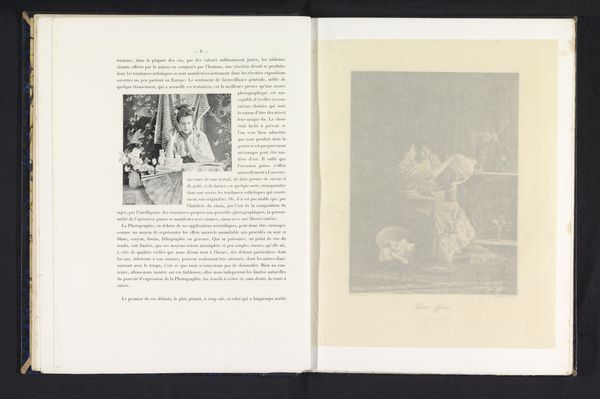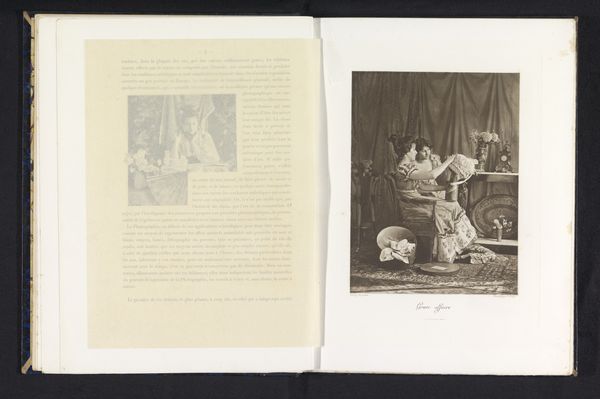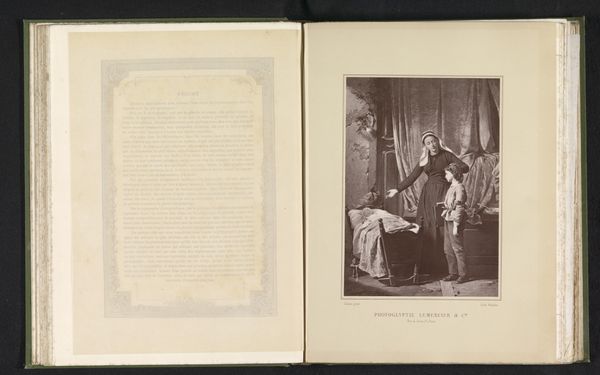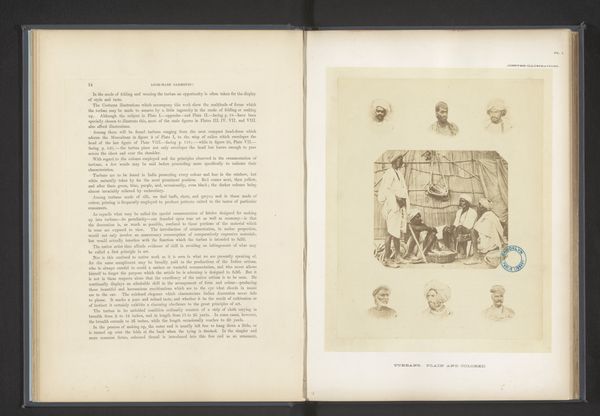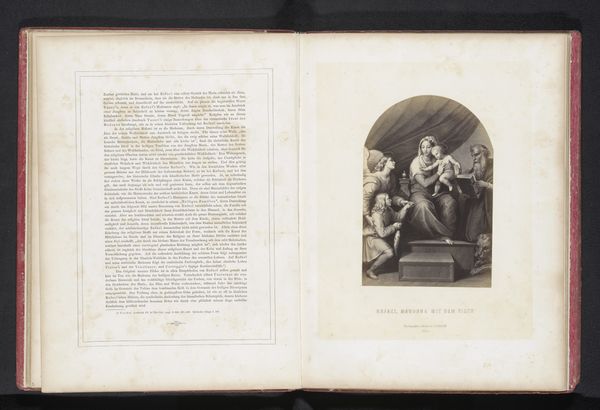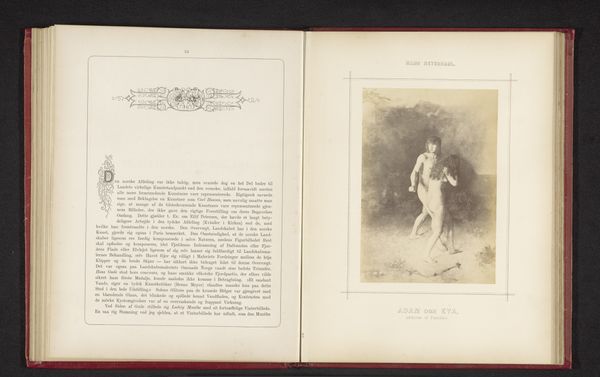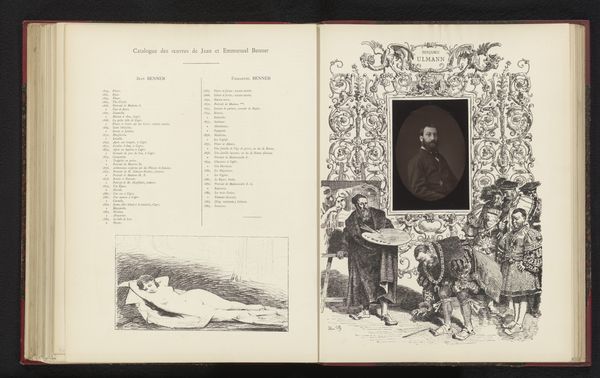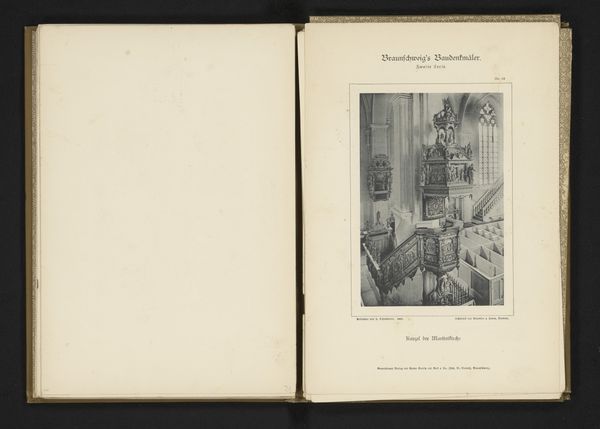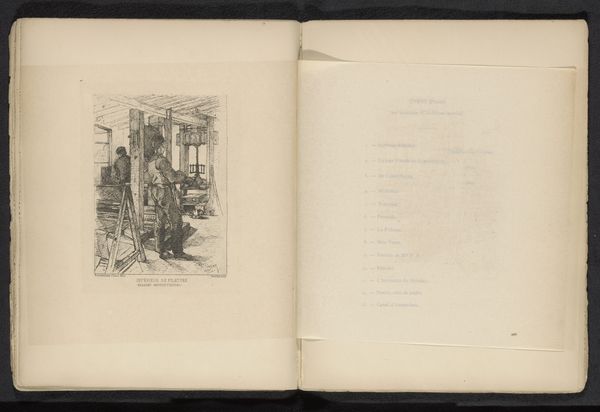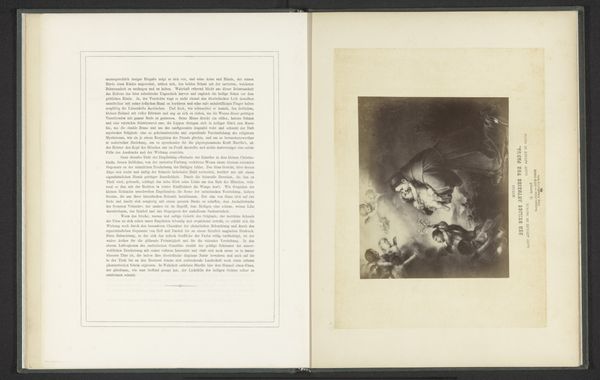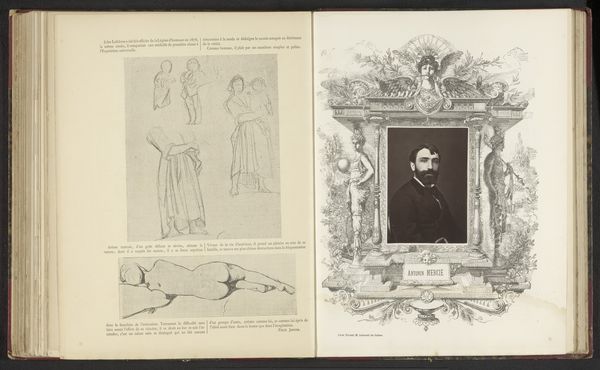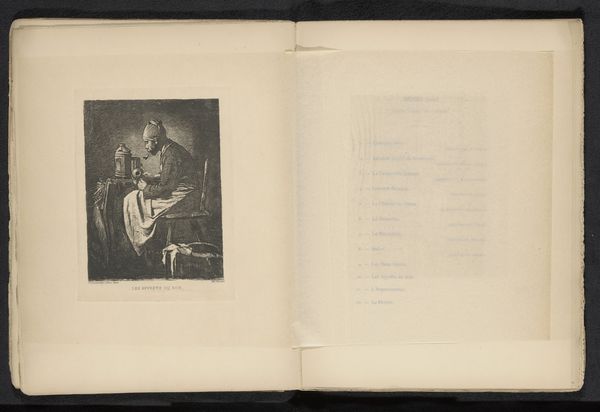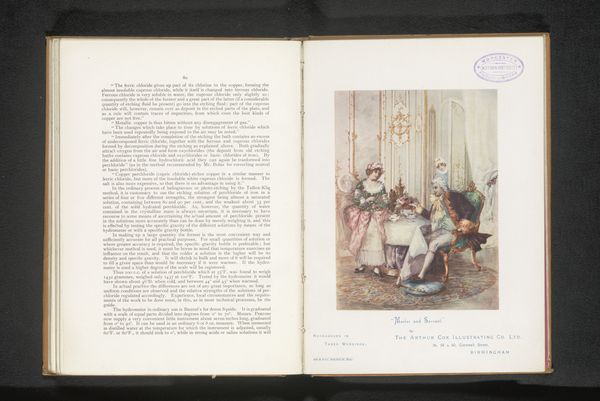
Reproductie van een zelfportret van Franz von Lenbach met zijn dochter Marion before 1901
0:00
0:00
print, oil-paint, photography
#
portrait
#
self-portrait
# print
#
oil-paint
#
german-expressionism
#
photography
Dimensions: height 276 mm, width 230 mm
Copyright: Rijks Museum: Open Domain
Editor: Here we have a reproduction of a self-portrait by Franz von Lenbach with his daughter Marion, created before 1901. The medium seems to be an oil painting that's been reproduced as a print, maybe even photographically? It's quite striking, almost unsettling. What strikes you most about it? Curator: It's fascinating to consider the production and reproduction of this image. Let's examine the materiality: the original oil paint, the photographic process involved in creating the print, the paper itself. Each step involves labor, and alters the final product. Editor: So, you are focusing on the physicality of the image? Curator: Precisely! Consider the social context: a famous artist, Lenbach, reproducing his work. Was this for wider distribution? Profit? To what extent does the photograph undermine the 'aura' of the original painting, turning ‘high art’ into something more readily consumed by the masses? The labour involved is obscured by its presentation. Editor: That makes sense. It's like a chain of production, starting with the artist and ending with the viewer holding a copy. Does the fact that it's a portrait of himself, alongside his daughter, influence your materialist reading? Curator: Absolutely. Consider the consumption of the image: is it bought to celebrate the artist, the father-daughter relationship, or both? Is the act of purchasing and displaying this portrait a display of wealth, taste, or some other social aspiration? We must challenge any idealized notions of artistic creation by highlighting the labour and resources underpinning its creation and distribution. The surface suggests artistic brilliance but obscures its industrial roots. Editor: That's a very insightful perspective, considering not just the artist's work, but also the labour and societal factors woven into making and sharing this artwork. Curator: Exactly, and thinking critically about these chains helps us question how we value art and what that reveals about the societies producing it.
Comments
No comments
Be the first to comment and join the conversation on the ultimate creative platform.
